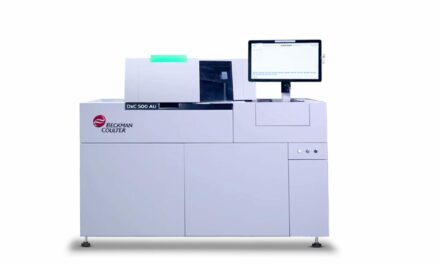The National Kidney Foundation (NKF), the American Society for Clinical Pathology (ASCP), and many of the nation’s leading laboratories and clinical laboratory associations have announced a collaboration to remove barriers to testing for chronic kidney disease (CKD). The alliance will help to standardize the tests used to detect CKD, improve comparison of test results among laboratories, increase early recognition of the disease, and promote patient awareness of the condition.
Almost 75 million Americans are at risk for developing CKD as a consequence of having hypertension or diabetes. Approximately 30 million Americans have CKD, but only about 3.6 million are aware that they have the condition, which often has no symptoms. CKD progression can be slowed or halted if the disease is caught in its early stages.
The alliance will combine the resources and talents of leading clinical laboratory associations, multiple laboratory providers, and patient advocacy organizations to advance improvements in laboratory testing for CKD. Organizations signing on to implement the group’s recommendations for improving CKD screening, diagnosis, and care management include the American Association of Bioanalysts, American Association for Clinical Chemistry, American Clinical Laboratory Association, ARUP Laboratories, BioReference Laboratories, Clinical Laboratory Management Association, LabCorp, Mayo Medical Laboratories, Memorial Sloan Kettering Cancer Center, National Independent Laboratory Association, Quest Diagnostics, and Sonic Healthcare USA. Any interested laboratory can join the alliance and carry out its recommended changes.
An important element underpinning the alliance is the group’s recommendation of a new test profile for CKD assessment and diagnosis. The new kidney profile follows evidence-based clinical practice guidelines, which recommend two tests for CKD assessment.1 Laboratories that adopt the new profile will simplify ordering of the tests needed to detect and diagnose CKD by pairing them together under a single heading on the laboratory requisition or electronic health record order form. Such streamlining of CKD test ordering could help to eliminate the need to search for each test separately, while making it easier to monitor results. The new profile also makes it easier for people at risk for CKD to better understand and track their health.
“Diagnosing kidney disease early is critical to improving long-term health in patients. This was the impetus for uniting the laboratory community around solving this problem,” says Joseph Vassalotti, MD, chief medical officer at the National Kidney Foundation. “The new kidney profile makes it easier for primary care physicians to determine if an at-risk patient has kidney disease, as it contains all the critical tests in one easy-to-order place.”
Currently, 94% of patients with hypertension and 61% of those with diabetes are not receiving both tests necessary to detect and assess CKD, as recommended by clinical practice guidelines, despite these being the top two risk factors for developing chronic kidney disease.1,2
“More than 30 million Americans are estimated to be living with CKD, but most aren’t aware of their status,” says Lee Hilborne, MD, MPH, past president and chair of ASCP’s committee on appropriate test utilization. “Once diagnosed, too many patients are in the later stages of the disease or have kidney failure, which requires dialysis or transplantation. Screening for CKD in the primary care setting may help more patients be diagnosed in early-stage disease, and ultimately improve outcomes.”
The kidney profile combines the patient’s estimated glomerular filtration rate (eGFR), which assesses kidney function, with the patient’s urine albumin:creatinine ratio (ACR), which assesses kidney damage. Both measures are used to test for and diagnose CKD in primary care settings.
Specifically, the profile combines tests for serum creatinine with eGFR (CPT 82565), and the urine ACR, as calculated from the results of tests for quantitative urine albumin (CPT 82043) and quantitative urine creatinine (CPT 82570).
People living with CKD have an elevated risk for cardiovascular disease. The combination of eGFR and ACR testing has been shown to be a strong predictor of both cardiovascular mortality and kidney failure risk.2
NKF and ASCP recommend that laboratories use the same equation to estimate GFR, and that they rename the microalbumin test to more accurately reflect what it is measuring—the albumin:creatinine ratio in urine. Standardizing ACR reporting using milligrams per gram will also make it easier for clinicians to compare results received from different labs.
For more information about the kidney profile, visit ASCP.
REFERENCES
- Inker LA, Astor BC, Fox CH, et al. KDOQI US commentary on the 2012 KDIGO clinical practice guideline for the evaluation and management of CKD. Am J Kidney Dis. 2014;63(5):713–735; doi: 10.1053/j.ajkd.2014.01.416.
- The state of chronic kidney disease today [online]. Chicago: American Society for Clinical Pathology, 2018. Available at: www.ascp.org/content/docs/default-source/get-involved-pdfs/istp-ckd/ckd-infographics.pdf. Accessed April 3, 2018.







